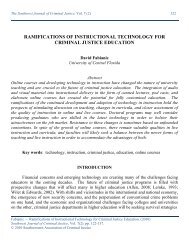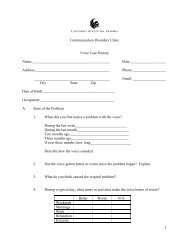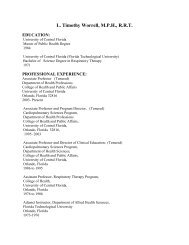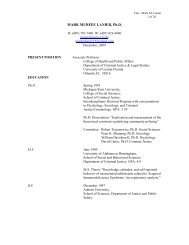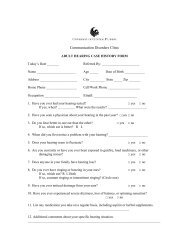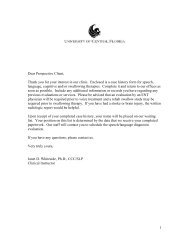SCCFP The Art of Story Telling
SCCFP The Art of Story Telling
SCCFP The Art of Story Telling
Create successful ePaper yourself
Turn your PDF publications into a flip-book with our unique Google optimized e-Paper software.
Creating a Good <strong>Story</strong>, continued<br />
<strong>Story</strong> Development as Dictation<br />
When we write or develop a story for telling, it should feel like taking dictation.<br />
Some may think <strong>of</strong> this as being seized by the inspiration <strong>of</strong> the Muses, or<br />
centering in the heart, or relaxing into a state <strong>of</strong> heightened creativity. Whatever<br />
it’s called, the experience is characterized by listening, alertness and receptivity,<br />
an awareness <strong>of</strong> entering into relation with something greater than our conscious<br />
will. In this sense, we don’t have to make ourselves write as much as let<br />
ourselves write. Whatever this something greater is, it is the source from which<br />
the vision, the understanding, and the words finally flow. Developing a story,<br />
then, is more an act <strong>of</strong> following than leading, the vocation not <strong>of</strong> the<br />
demagogue but <strong>of</strong> the scribe.<br />
<strong>The</strong> <strong>Story</strong>’s Predicament is the Material for a Good <strong>Story</strong><br />
A story has a precipitating event, a conflict, a resolution <strong>of</strong> conflict, and a point.<br />
But what precipitating event? Which conflict, and how to resolve it? And what is<br />
the point? Whatever form the story takes, it must be imbued with the life you or<br />
the story’s contributors know, the life that has moved you or them to this point,<br />
or it most assuredly will not move the reader. You don’t need to fabricate drama.<br />
Every life has drama; the gift you can bring to the story is to discern this drama<br />
and expand, accentuate, and articulate it in an edifying way.<br />
Conflict: An Essential Ingredient<br />
A story needs a through-line that's anchored in a central conflict or predicament.<br />
This conflict should build, as opposed to being random or episodic. Someone<br />
<strong>of</strong>fered this formula for plot structure: Get a hero. Get the hero up a tree. Throw<br />
rocks at the hero. Throw bigger rocks at the hero. Get the hero out <strong>of</strong> the tree.<br />
<strong>The</strong> resolution <strong>of</strong> the conflict (hero comes out <strong>of</strong> tree) gives the story a climax.






